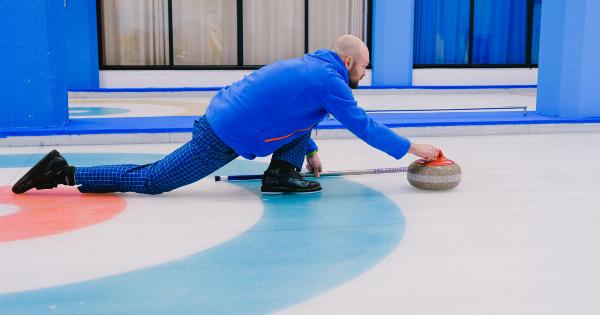Knee pain is a common complaint that affects millions of people worldwide. It can occur due to various reasons such as injuries, arthritis, overuse, and age-related wear and tear.
Whatever the cause may be, dealing with knee pain can be a frustrating and debilitating experience. However, there are simple solutions that can help alleviate the discomfort and improve the quality of life for those suffering from knee pain.
Understanding Knee Pain
The knee joint is the largest and most complex joint in the body. It is made up of bones, tendons, ligaments, cartilage, and synovial fluid, all of which work together to provide stability, support, and mobility to the lower body.
When any of these structures are damaged or inflamed, it can result in knee pain.
Knee pain can manifest in different ways, depending on the underlying cause. It may be sharp or dull, constant or intermittent, and can range from mild to severe.
The pain may be localized to a specific area of the knee or radiate to other parts of the leg. Other accompanying symptoms may include swelling, stiffness, weakness, or restricted range of motion.
Causes of Knee Pain
There are numerous factors that can contribute to knee pain:.
1. Injuries
Knee injuries, such as sprains, strains, or tears of the ligaments or tendons, are common causes of knee pain. They can occur due to sports activities, accidents, or sudden movements that put excessive stress on the knee joint.
2. Arthritis
Osteoarthritis, rheumatoid arthritis, and other forms of arthritis can lead to knee pain. Arthritis causes the breakdown of the protective cartilage in the knee joint, resulting in bone-on-bone friction, inflammation, and pain.
3. Overuse
Repetitive activities that strain the knee joint, such as running, jumping, or kneeling, can cause overuse injuries and subsequent knee pain. This is common among athletes and individuals with physically demanding occupations.
4. Obesity
Excess body weight puts additional stress on the knees, increasing the risk of knee pain and developing conditions like osteoarthritis.
5. Age-related Wear and Tear
As we age, the structures within the knee joint can gradually deteriorate, leading to knee pain and reduced mobility.
Simple Solutions for Knee Pain
While severe cases of knee pain may require medical intervention and treatment, there are several simple solutions that can help alleviate mild to moderate knee pain:.
1. Rest and Ice
When experiencing knee pain, it is crucial to give the joint adequate rest. Avoid activities that aggravate the pain and apply ice packs for 15 to 20 minutes, several times a day, to reduce inflammation and numb the area.
2. Compression and Elevation
Wearing a compression bandage or knee brace can provide support to the knee joint and help reduce swelling. Additionally, elevating the leg while resting can help reduce fluid build-up in the tissues surrounding the knee.
3. Pain Medication
Over-the-counter pain medications, such as acetaminophen or nonsteroidal anti-inflammatory drugs (NSAIDs) like ibuprofen, can help alleviate knee pain and reduce inflammation.
However, it is important to consult a healthcare professional before taking any medications, especially if you have any underlying health conditions.
4. Physical Therapy
Working with a physical therapist can be immensely beneficial for individuals with knee pain. They can provide exercises and stretches to improve knee strength, flexibility, and range of motion.
Physical therapy also focuses on correcting movement patterns to prevent further damage or injuries.
5. Low-Impact Exercise
Avoid high-impact activities that put excessive stress on the knees. Instead, engage in low-impact exercises like swimming, cycling, or using an elliptical machine to maintain overall fitness without exacerbating knee pain.
6. Weight Management
Maintaining a healthy weight can significantly reduce the strain on the knees. Losing excess weight can alleviate knee pain and slow down the progression of arthritis.
7. Supportive Footwear
Wearing shoes with proper arch support and cushioning can help distribute the body’s weight more evenly, reducing the load on the knees. Orthotic inserts may also be beneficial for individuals with specific foot alignment issues.
8. Heat Therapy
Applying heat to the knee can help relax muscles, increase blood circulation, and reduce stiffness. Heat packs, warm towels, or warm baths can provide relief for knee pain.
9. Use of Assistive Devices
Using assistive devices such as crutches, canes, or walkers can help alleviate weight-bearing stress on the knee joint, especially during the recovery phase following an injury or surgery.
10. Stress Reduction
Chronic stress can exacerbate pain and inflammation. Engaging in stress-reducing activities like meditation, deep breathing exercises, or yoga can help manage knee pain and promote overall well-being.
Prevention is Key
While not all knee pain can be prevented, certain measures can help reduce the risk of developing knee conditions:.
1. Warm-up and Cool-down
Prior to engaging in any physical activity, it is important to warm up the body and stretch the muscles. This prepares the knees and other joints for movement and reduces the risk of injuries.
2. Proper Technique
When participating in sports or performing repetitive activities, ensure that you are using the correct technique. Improper form can put undue stress on the knees, leading to pain and injuries.
3. Gradual Progression
Avoid overexertion and gradually increase the intensity and duration of your exercise routine. Sudden spikes in activity can strain the knees and increase the risk of developing knee pain.
4. Regular Exercise
Engage in regular physical activity to keep the muscles around the knees strong and flexible. Strong muscles provide better support to the knees and reduce the risk of instability or injury.
5. Healthy Lifestyle
Eat a balanced diet rich in nutrients to support joint health. Incorporate foods like leafy greens, fatty fish, nuts, and fruits to provide the necessary vitamins and minerals.
Conclusion
Knee pain can significantly impact one’s quality of life, but it doesn’t have to be a lifelong struggle.
By implementing simple solutions like rest, ice, compression, and elevation, along with lifestyle changes such as weight management and regular exercise, individuals can successfully manage their knee pain and improve their overall well-being. Remember, it is always important to consult a healthcare professional for an accurate diagnosis and personalized treatment plan.























